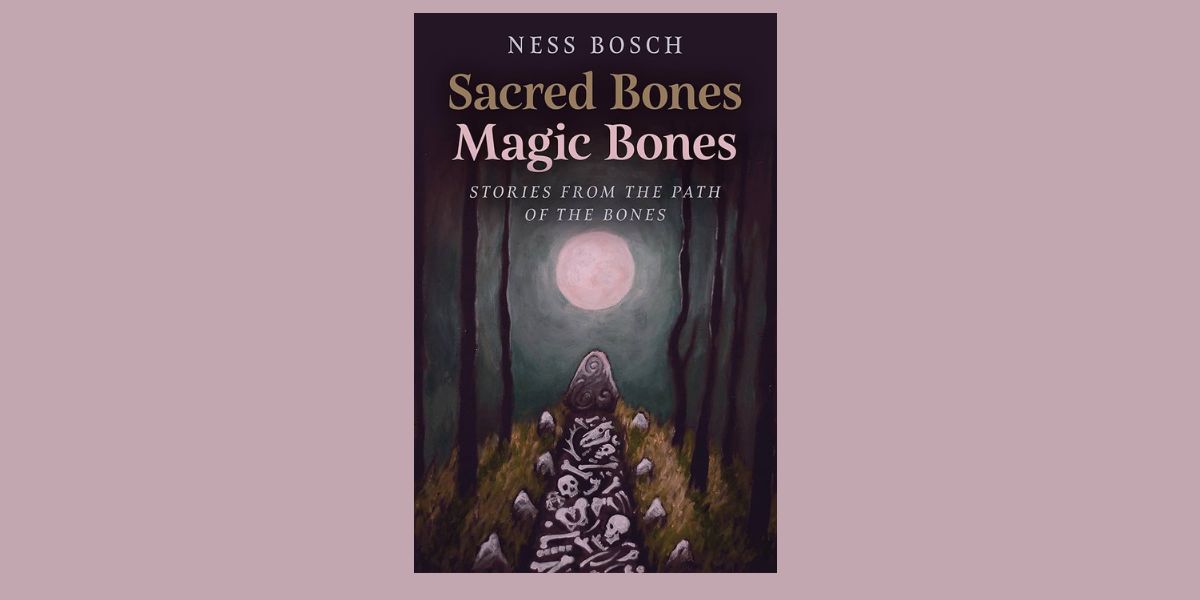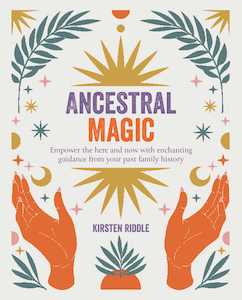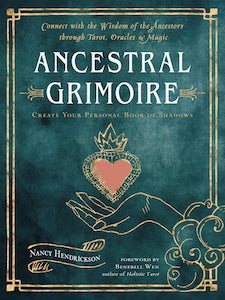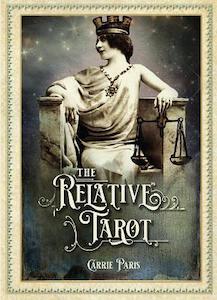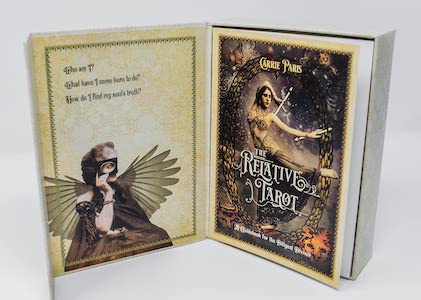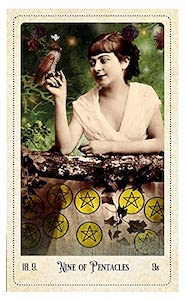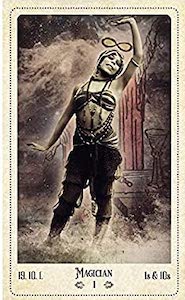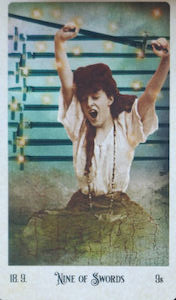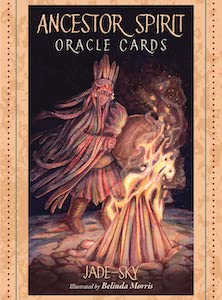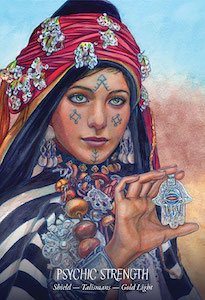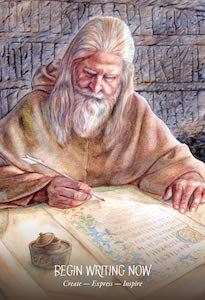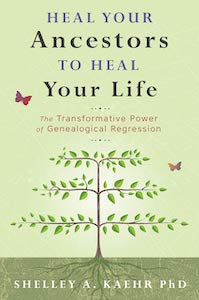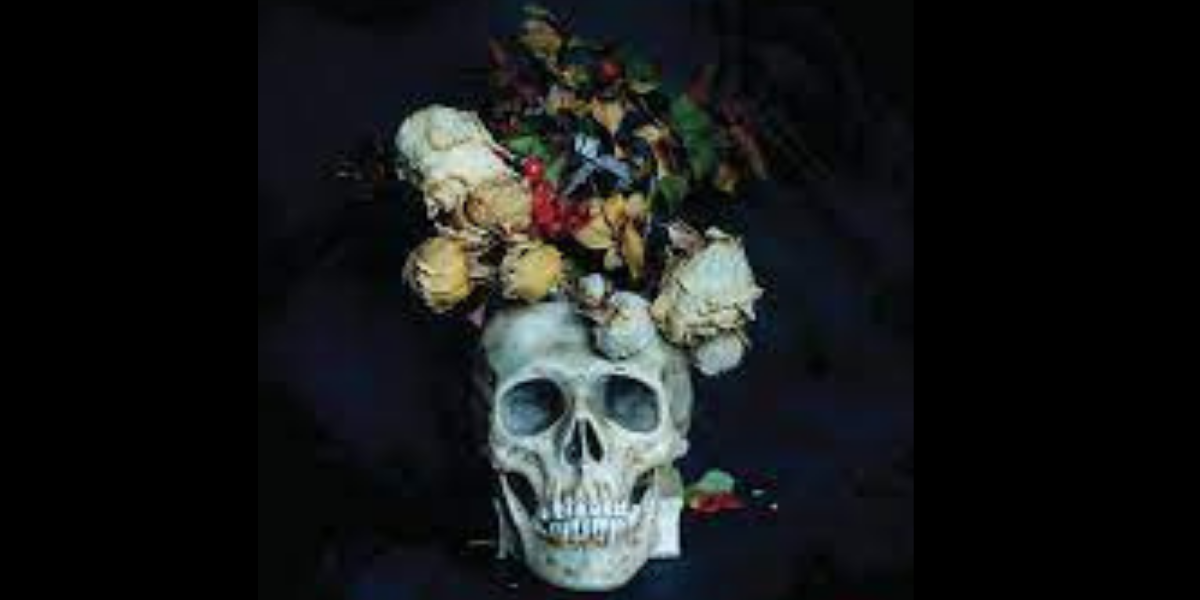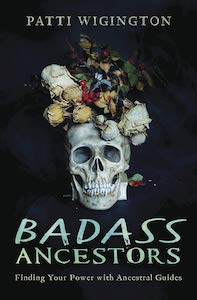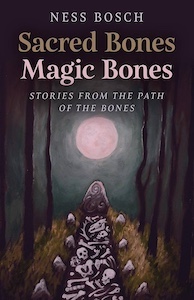
Sacred Bones, Magic Bones: Stories from the Path of the Bones, by Ness Bosch
Moon Books, 1803412127, 208 pages, June 2024
Sacred Bones, Magic Bones: Stories from the Path of the Bones by Ness Bosch is a captivating journey into the world of bone magic, a topic that often remains shrouded in mystery and intrigue. Bosch, an experienced shamaness and priestess, skillfully bridges the gap between ancient traditions and contemporary practice. The book is not just a guide; it’s an immersive experience that invites readers to explore the spiritual and magical significance of bones, offering a fresh perspective on a practice that dates back to prehistoric times.
Bosch has done a great job of making this book both education and engaging. She’s clearly done thorough research into the topic, while the inclusion of personal anecdotes and real-life experiences of her own spiritual path adds an authentic touch. The content is multicultural, sharing stories from around the world, and this broad perspective invites readers to go beyond the normal divisions that keep us separated and to discover the holistic Path of the Bones.
“In a world full of barriers, ones we have to jump to relate one another, bones speak a universal language that connect us.”1
The book is nicely organized into two parts. Part I focuses on stories of the bones. Bosch begins with stories of some of the oldest bones found to date and the stories archeologists have gathered based on their remains, such as the cave Atapuerca in Iberia and the bones of Neve’s, a baby who lived about 10,000 years ago.
She then moves onto bones in folklore, teaching how certain bones are considered lucky or can be used to make ceremonial musical instruments. The wide-range of bone usages is bolstered by the folk stories that have upheld their significance throughout time. Hence why people will travel to see someone’s grave or religious relics and the Hand of Glory spell continues to captivate people’s imagination.
The next chapter focuses on ancient deities with a connection to bones, often through ritual sacrifices. The goddess and goddesses mentioned are Kali, Triton, Bau, Hel, Chamunda, Baba Yaga, and more. It’s very interesting to see how bones are an intersection between all these various deities from different cultures and pantheons.
Bosch then turns her attention to currently practiced, also known as living, traditions. She teaches how necromancy goes back to prehistoric times, writing:
“At some point in the line, the need arose to communicate with the dead and establish a communication bridge with the underworld or the other side of the veil.”2
And through time, bones have always had an important role in necromancy, linking them from past to present in on-going traditions. This chapter also includes stories from people currently working with bones in their spiritual path, ranging from Druidry to witchcraft to Hoodoo to Inuit, which is insightful to read about firsthand.
In Part II, Bosch really delves into the Path of the Bones, which she describes “belongs to all of us, is not something strange or foreign to us.”3 She shares the visions and initiations that called her towards the Path of the Bones and introduces readers to La Huesera, The Bone Mother. Bosch shares stories and songs of The Bone Mother, offering readers a doorway into establishing their own relationship with Her.
Within this section, Bosch also shares how to incorporate bones into one’s spiritual practice. Bosch covers everything from the ethical sourcing of bones to the various rituals and spells that can be performed using them. Her directions for cleaning bones, both physically and energetically, is very helpful guidance. The deep respect for the subject matter is evident throughout the text, as Bosch emphasizes the importance of intention, respect, and ethical considerations when working with bones. This thoughtful approach ensures that readers understand the gravity and sanctity of the practice, rather than treating it as a mere novelty.
This section also really gets into the heart of working with ancestors. Bosch assures readers it’s easier than one thing to establish a connection with our ancestors and suggests ideas like building an ancestor altar and shamaic journey to start or deepen one’s relationship with them. There’s also plenty of spells offered for a variety of desires: binding, protection, abundance, achievement. What I enjoyed most about reading through the spells is that each one uses different types of bones–seagull bones for achieving a goal, badger bones for protection. There’s also guidance for creating amulets and incense with bones too.
Whether you are a seasoned practitioner or a curious novice, Sacred Bones, Magic Bones serves as a comprehensive and enlightening guide to the world of bone magic, encouraging readers to explore their own spiritual paths with reverence and confidence. I would especially recommend this book for those interested in ancestor work, as Bosch really delves into the connection bones establish between ourselves and our predecessors. One of my favorite parts of the book is the ancestor songs included at the end.
And for those looking to expand their bone magic practice further, absolutely check out Bosch’s website. She offers services such as training and consultations for shamanic tattooing, a wide range of spiritual retreats, and remote shamanic healing services. She also is a pagan celebrant–the first Spanish-speaking one ever registered in Scotland!
In addition to these services, Bosch also has her own priestess schools and spiritual training programs, including Goddess Temple Alba (a Pagan Temple in Scotland), The Covenant of the Waters (Sea Priestess training), Priesthood of Astarte, and Fellowship of Isis trainings. There’s also a website dedicated specifically to the Path of the Bones.
Overall, in Sacred Bones, Magic Bones, Bosch does a wonderful job blending historical context with practical advice. She provides readers with a rich tapestry of folklore, mythology, and practices for them to cultivate their own connection with bones and the deities associated with them, in particular The Bone Mother. The exploration of bone magic offers a unique pathway to connect with the profound mysteries of life, death, and the ever-present spirit world, reminding us of the intricate web of connections that bind all living beings.
Alanna Kali is an astrologer, numerologist, and pioneer spirit that loves to explore life through the lens of depth psychology. She has a passion for studying the humanities and social trends. Her academic work is centered upon reuniting body, mind, and spirit through eco-psychology. She loves reading, spending time in nature, and travel.
